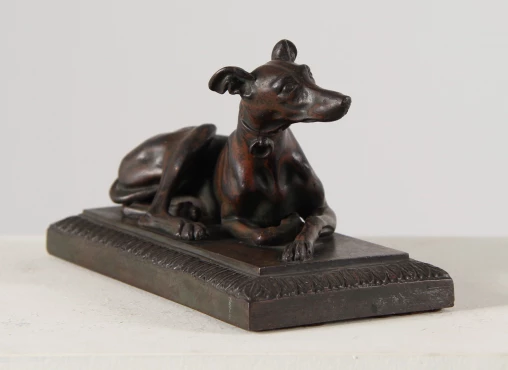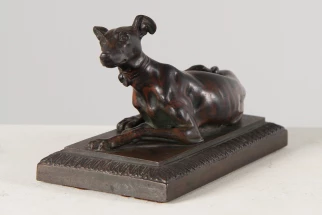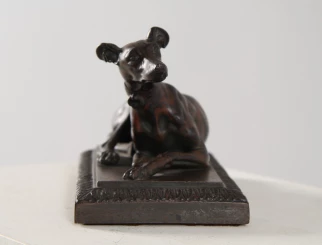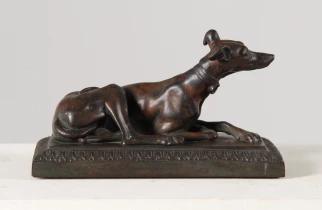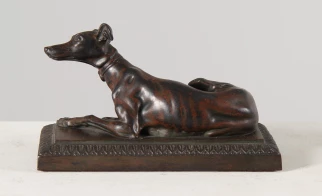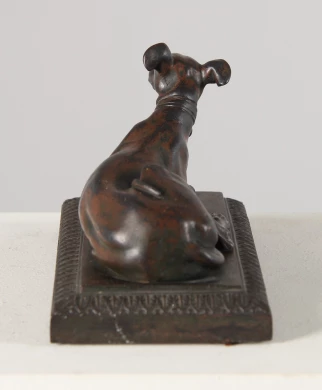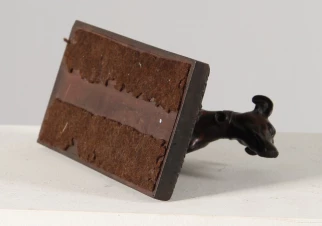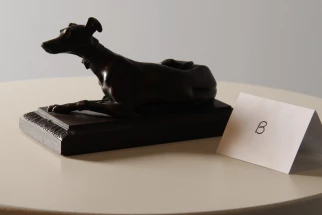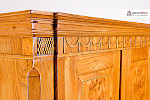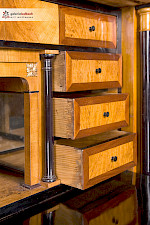Fer de Berlin - greyhound as paperweight
Berlin
Iron
Biedermeier around 1830
Dimensions: H x W x D: 9.5 x 17.1 x 8.8 cm
Description:
Greyhound lying on a plinth with a surrounding palm leaf frieze. In a resting position, the animal lies in a relaxed pose but with its head raised attentively.
The paperweight's design is attributed to Johann Friedrich Drake (1805-1882).
Drake is considered one of the most important representatives of the Berlin school of sculpture. His clients included the Prussian King Frederick William IV, who commissioned a statue of his father Frederick William III. Drake was represented at the major world exhibitions in London and Paris and created a statue of the American explorer Alexander von Humboldt in 1876 for the centenary of the US Declaration of Independence, which was erected in Philadelphia. His most famous work is the Victoria he created for the Victory Column in Berlin, which was inaugurated in 1873.
The paperweight offered here was probably cast by the Königliche Preussische Eisengießerei Berlin (KPEG). From 1804, the KPEG or KPE produced sculptures and monuments in Berlin as well as everyday objects such as weights, rollers, stamps and iron crosses. The first steam locomotives were also produced here.
Due to the high quality, which was also appreciated by famous contemporaries such as Karl Friedrich Schinkel and Christian Daniel Rauch in addition to Drake, the established term "Berliner Eisen" or internationally "Fer de Berlin" soon became established for the artefacts created here.
Condition:
Good authentic condition with slight signs of age and use.
Please refer to the following literature:
Anne Forschlker-Tarrasch - European Cast Iron
A version of the object offered here can be found in the Lamprecht & Garbaty Collection in the Birmingham Museum Of Art with the inventory number 1986.248.2. It is illustrated and described under cat. No. 766 and described.
Article found under: Other facility
Video greyhound Fer de Berlin
Also interesting
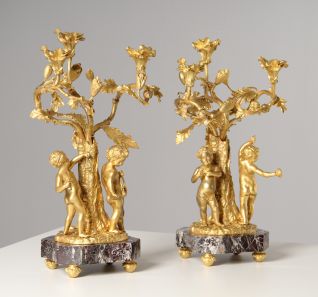
Pair of candelabra with musical cherubs
France
gilt bronze
second half of the 19th century.
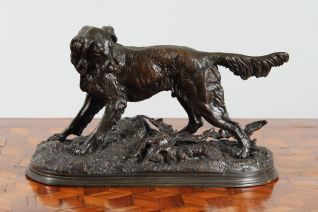
Jules Moigniez - Bronze hunting dog with shot hare
France
Bronze
Late 19th century
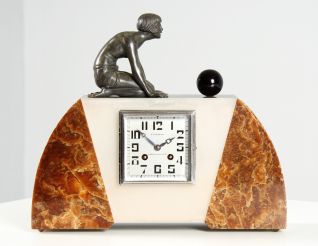
Art Deco mantel clock
France
Marble, metal
Art Deco around 1930
